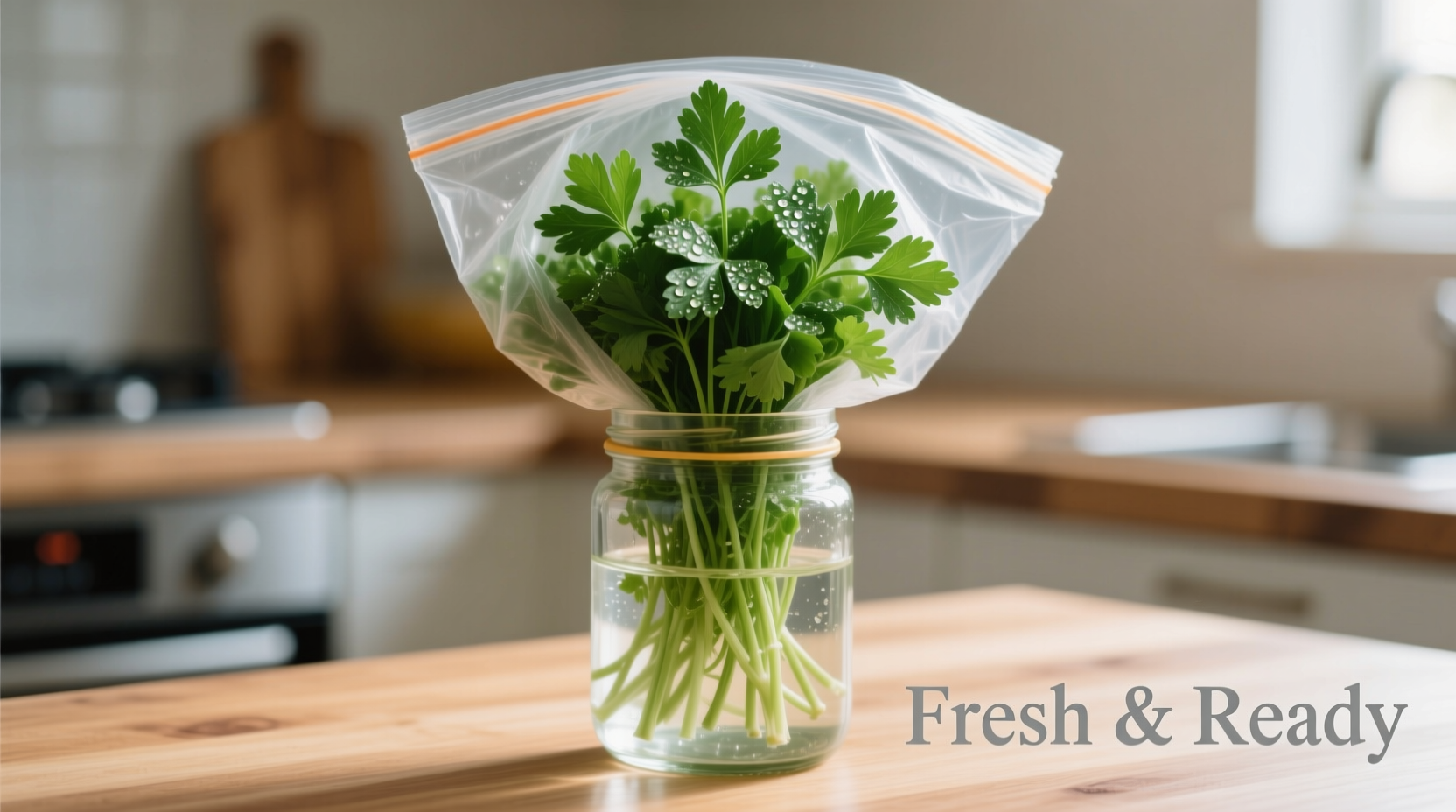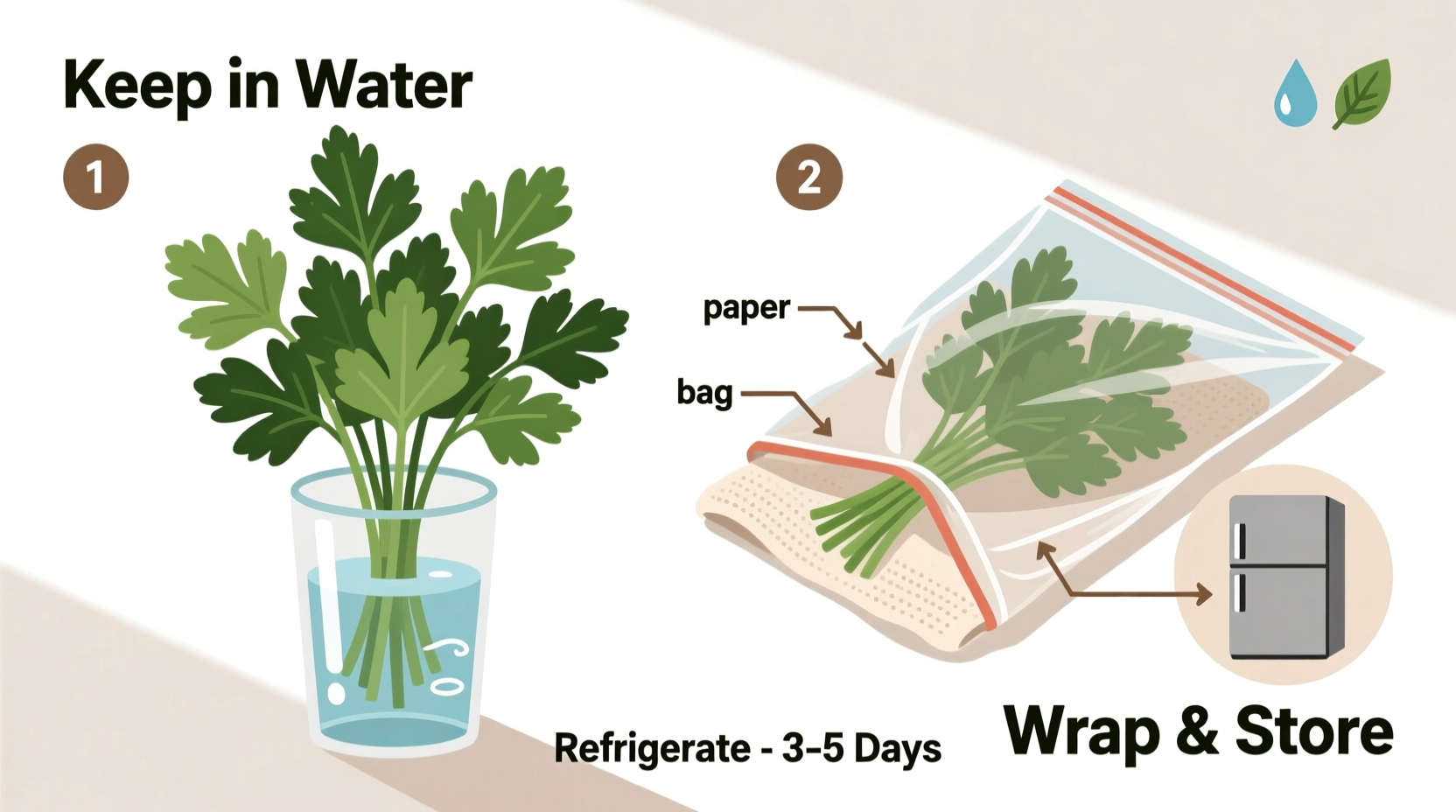Nothing ruins a chef's plans like limp, brown parsley. As a culinary professional who's worked with fresh herbs daily for over 15 years, I've tested every storage method available. The water glass technique works because it mimics parsley's natural growing conditions while controlling moisture loss. Unlike common misconceptions, refrigeration alone isn't enough—proper humidity management is critical for extending shelf life. This guide reveals exactly how to keep your parsley fresh, backed by food science research and professional kitchen experience.
The Science Behind Parsley Preservation
Parsley, like all leafy herbs, continues to respire after harvest. According to USDA food safety guidelines, herbs lose freshness primarily through moisture evaporation and ethylene gas exposure. The optimal storage environment maintains 90-95% relative humidity while allowing some air circulation—conditions difficult to achieve with standard plastic bags.
Research from the University of California's Postharvest Technology Center confirms that cut herbs stored in water with partial coverage maintain cellular turgor pressure, preventing wilting. This method effectively replaces the moisture lost through transpiration while limiting oxygen exposure that accelerates spoilage.
| Storage Method | Average Shelf Life | Quality Preservation |
|---|---|---|
| Original supermarket packaging | 3-5 days | Poor (rapid wilting) |
| Plastic bag only | 5-7 days | Fair (yellowing begins) |
| Water glass method | 14-21 days | Excellent (retains crispness) |
Step-by-Step Water Glass Method
This professional technique requires minimal equipment but delivers maximum results:
- Trim stems - Cut ½ inch from the bottom of the stems with a sharp knife. This opens the vascular system for better water absorption.
- Fill container - Use a glass or jar with 1-2 inches of cool water (not ice water, which shocks the plant).
- Place parsley - Stand stems upright in water, ensuring leaves don't touch the water.
- Cover loosely - Place a plastic produce bag over the top, securing with a rubber band but leaving room for air exchange.
- Store properly - Keep in the main compartment of your refrigerator (not the door where temperature fluctuates).
- Maintain regularly - Change water every 2-3 days and trim stems if they darken.

Alternative Storage Methods Compared
While the water glass method is superior, these alternatives work in specific situations:
Damp Paper Towel Technique
When refrigerator space is limited:
- Wash and thoroughly dry parsley (critical step—wet herbs mold faster)
- Wrap in slightly damp paper towels
- Place inside a partially opened plastic bag
- Store in high-humidity crisper drawer
This method works for about 10 days but requires careful moisture management. The University of Minnesota Extension notes that "excess moisture creates an environment where bacteria and mold can thrive," so the paper towels should feel damp but not wet.
Commercial Herb Keepers
Specialized containers with built-in water reservoirs can work well but come with limitations:
- Require proper assembly to maintain humidity balance
- Often too small for full parsley bunches
- Cost $15-$25 with minimal performance advantage over DIY methods
Consumer Reports testing shows these containers extend freshness by about 25% compared to standard storage, but only when used exactly as directed.
Common Storage Mistakes to Avoid
Even with good intentions, these errors sabotage parsley freshness:
- Storing in original packaging - Most supermarket clamshells create condensation that accelerates decay
- Washing before storage without drying - Excess moisture promotes bacterial growth (USDA Food Safety and Inspection Service confirms moisture is the primary factor in produce spoilage)
- Using airtight containers - Completely sealed environments trap ethylene gas, speeding deterioration
- Keeping at room temperature - Parsley stored on countertops typically wilts within 48 hours
Troubleshooting Wilted Parsley
If your parsley shows early signs of wilting:
- Submerge completely in ice water for 15-20 minutes—this often revives slightly wilted herbs
- Trim additional ¼ inch from stems and refresh water immediately
- Remove any yellowing or slimy leaves to prevent spoilage spread
Severely wilted parsley with dark spots or slimy texture should be discarded. The FDA advises that "when in doubt, throw it out" applies to all fresh produce showing signs of advanced decay.
Long-Term Preservation Options
For excess parsley you can't use within three weeks:
- Freezing in oil - Chop parsley, pack into ice cube trays, cover with olive oil, and freeze. Transfer cubes to freezer bags for up to 6 months.
- Drying method - Hang small bunches upside down in a dark, well-ventilated area until completely dry (about 2 weeks), then store in airtight containers.
- Parsley paste - Blend with minimal oil to form a paste, freeze in small portions for instant flavor in sauces and soups.
Remember that frozen or dried parsley works best in cooked dishes rather than as fresh garnish. The flavor profile changes slightly, but you'll retain most nutritional value compared to store-bought dried alternatives.











 浙公网安备
33010002000092号
浙公网安备
33010002000092号 浙B2-20120091-4
浙B2-20120091-4